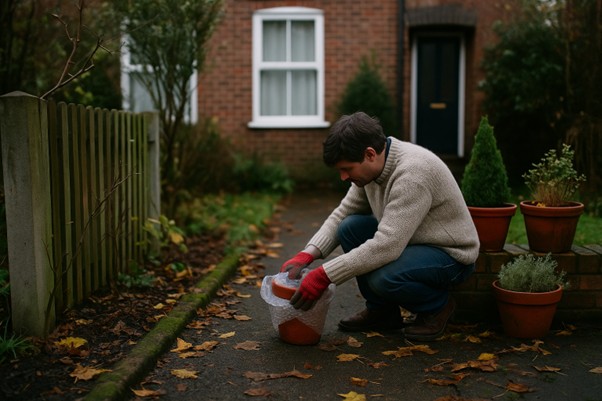Preparing Your Home and Garden for Winter

Winter often arrives as a run of grey afternoons, swollen pavements and long spells of rain, with temperatures that drift lower as the season settles in. These conditions call for early preparation outdoors because wetter winters can strain fences, patios and garden plants even when the air feels milder than residents remember from earlier decades.
Inside the house, the season feels calmer than the weather suggests, as people draw curtains earlier and ease into familiar evening routines. Time then passes easily with a book, a puzzle or a poker game available when playing from the United Kingdom beside a warm fireplace, yet the garden, paths and exterior walls still rely on work done now to cope with the colder months ahead.
Understanding Winter Conditions
This part of southwest London rarely sees long-lasting snow, and cold snaps tend to arrive in short bursts. Even so, the official picture now points to winters that are warmer overall yet marked by more frequent downpours and very wet periods, so cold and water both need attention when planning home maintenance.
According to the Met Office’s 2024 State of the UK Climate Annual Report, air and ground frosts across the United Kingdom have reduced by around a quarter since the 1980s. The overall trend still leaves households facing sudden colder nights alongside long stretches of saturated soil and overflowing gutters, which makes steady preparation more reliable than waiting for problems to appear
Protecting Garden Plants Before the First Frost
Gardeners in the town see this changing balance in their borders and pots. Certain winters let tender plants hang on for longer than they once did, yet a single sharp frost can still scorch leaves, damage buds, and weaken shrubs that never quite settled into deep dormancy.
Container plants are especially exposed because their roots sit above ground and feel cold more quickly than plants in open soil. This is why the Royal Horticultural Society’s gardening advice for preventing winter damage stresses early protection for container plants, including steps that stop roots freezing when the first frosts arrive. Evergreen plants in pots deserve particular care, as they continue to lose moisture through their leaves while the compost around their roots cools and becomes waterlogged.
Practical steps for your patio are straightforward.
- Wrap the containers themselves with bubble polythene or straw so the roots stay insulated, and stand pots together in a sheltered corner close to the house where walls give a little extra warmth.
- Check the forecast for drops towards freezing.
- At the first sign of frost, add fleece or other coverings so favourite plants see out the colder nights in reasonable comfort.
Small routines like these make a noticeable difference later in the season, when the garden rests and the cold arrives more firmly.
Caring for Paths, Fences and Outdoor Structures
The colder months place steady pressure on the parts of the garden that stay outdoors in all conditions, and these areas often show the first signs of strain. Paths become slick when moss settles into the joints between slabs, fences loosen when wind rattles old fixings and sheds can let in water through worn felt or small gaps around their frames.
A slow walk around the boundaries of the garden helps to catch these issues early. Clearing leaves from gullies and patio corners keeps rainwater moving away from the house, while brushing moss from steps and paved areas reduces the chance of slipping when surfaces stay damp for days at a time. Fences deserve similar attention, as posts and panels that move in the wind often need new screws or brackets before winter storms arrive.
It also helps to look at small features such as hinges, latches and the edges of shed roofs, because these materials react quickly to long spells of rain and cold. A few minutes spent tightening fixings or sealing minor gaps now gives the outdoor structures a better chance of standing firm through another Teddington winter.







